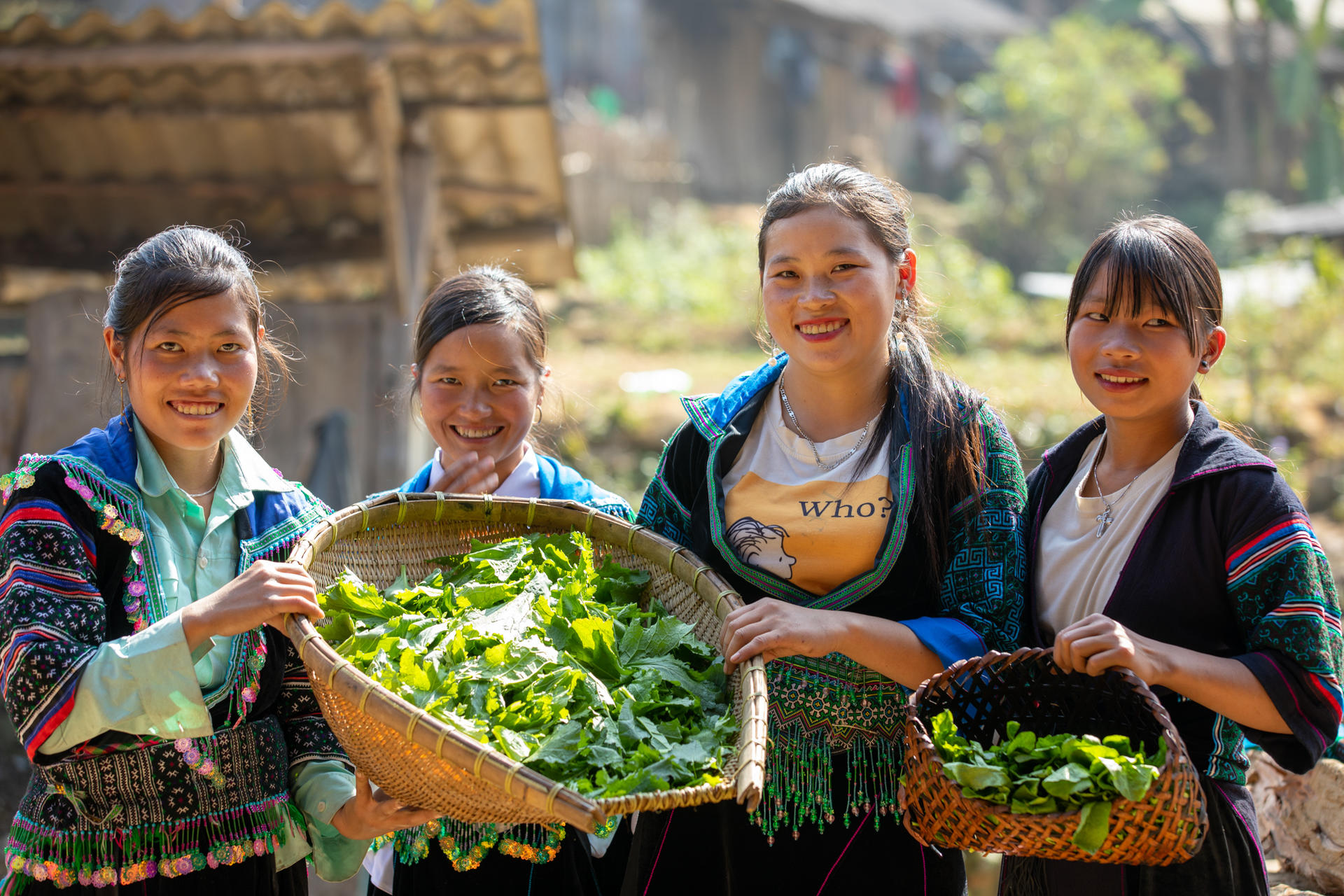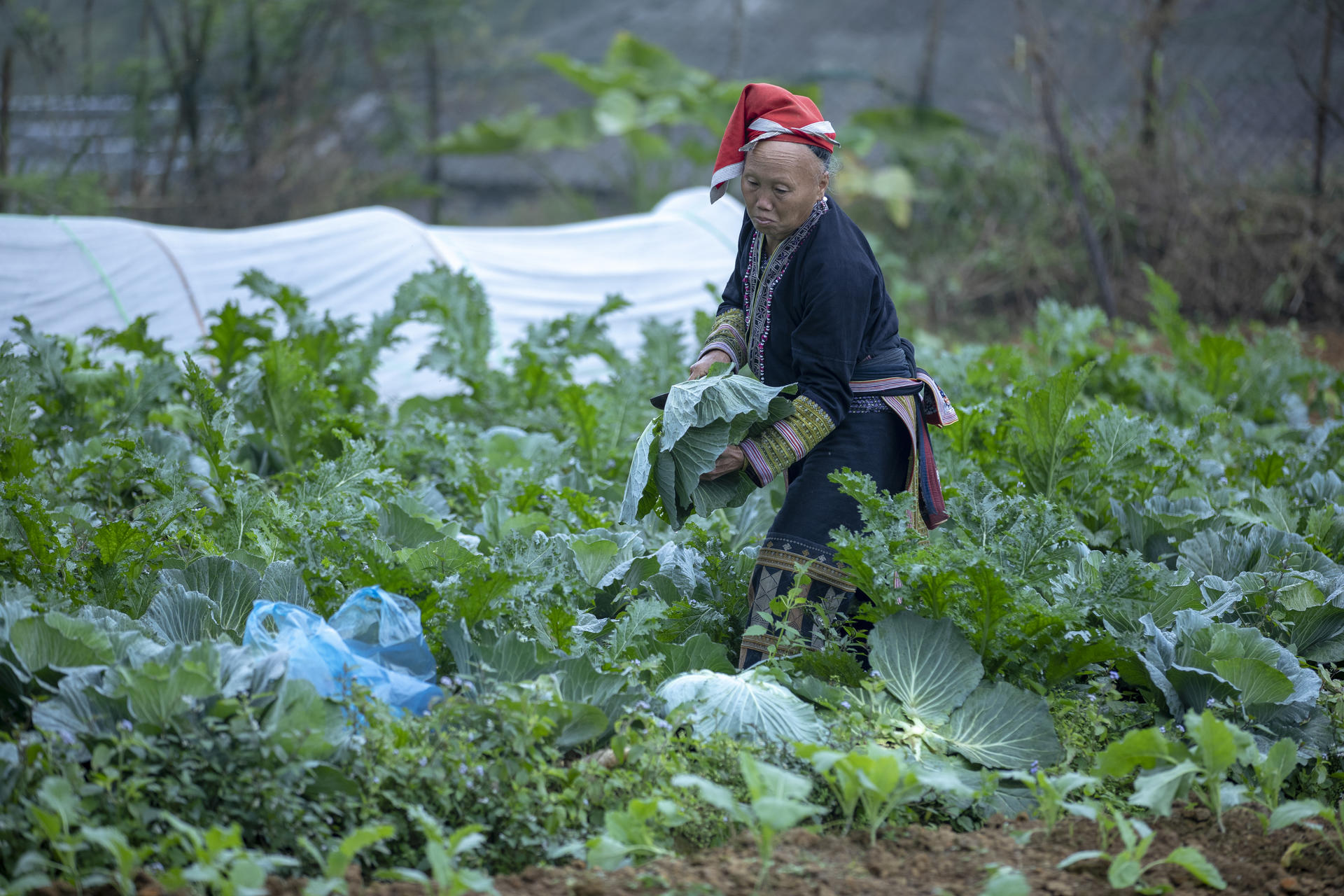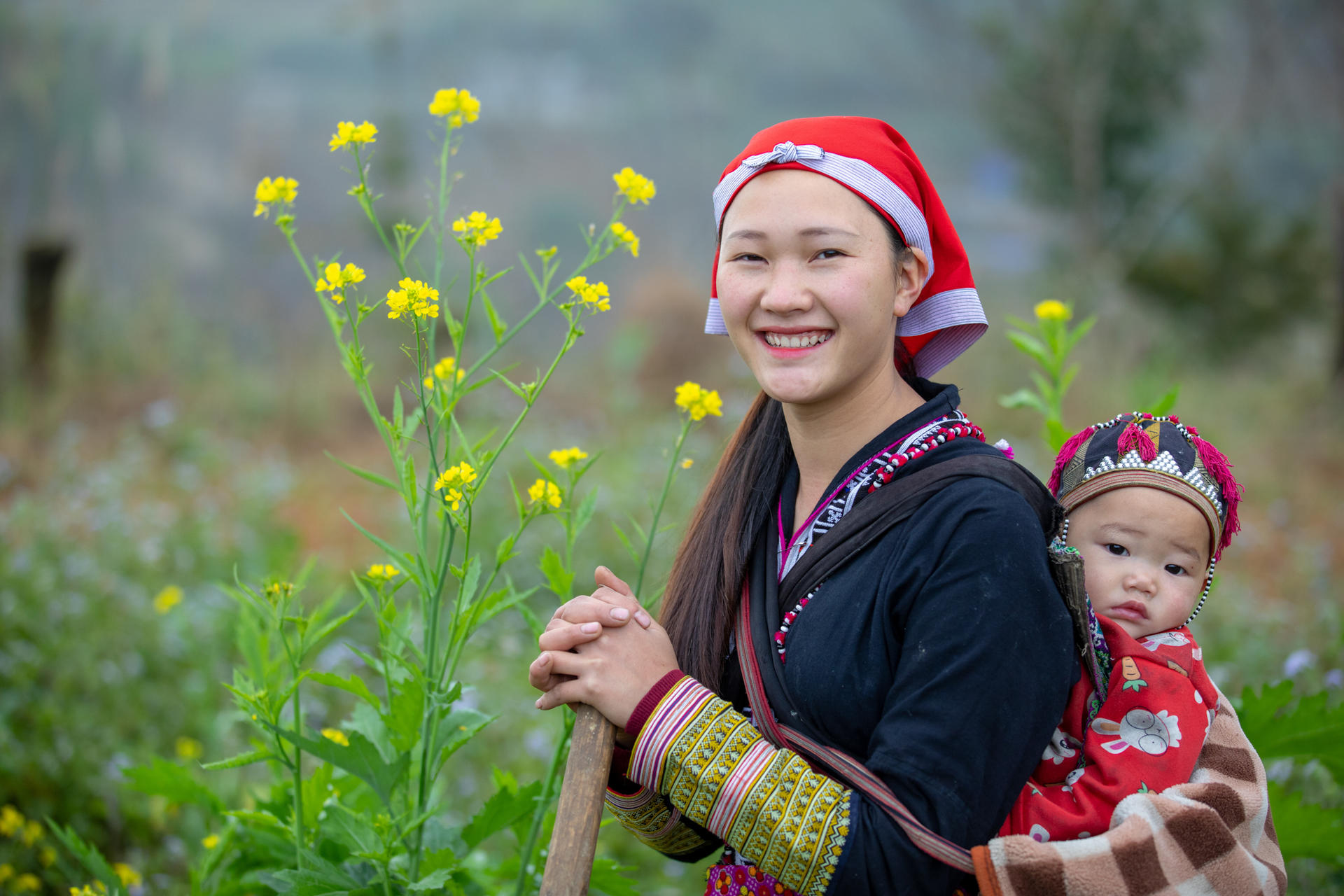2020 Annual Report Using biodiversity to forge strong partnerships to reverse food threats in Asia

Preparing Hmong mustard before cooking, Sa Pa, Lao Cai province, Vietnam.
Credit: 2020 Alliance of Bioversity International and CIAT/Trong Chinh
For more than 50 years, Asia has had huge increases in food crop productivity. Yet the region still faces malnutrition and other diet-related diseases, in part because our food systems do not take agricultural biodiversity into account. Without agrobiodiversity, our resilience to the extreme impacts of climate change is reduced. Buffers against disease and pest infestations are minimized and diets are poorer in vitamins and minerals. If we don’t act now, this will lead to more fragile ecosystems and compromise long-term human health.

Stephan Weise
Managing Director, Asia, and a.i. director, Partnerships & CommunicationsAsia is known for its biodiversity. It is home to a wide variety of globally important indigenous wild and semi-domesticated crop species. Yet these crops are neglected, underutilized and even under threat, replaced by more common homogenous staple foods. We believe that making traditional foods like indigenous fruits and vegetables more widely available can reduce poverty and malnutrition in Asia -- and around the world.

Harvesting cabbage, Sa Pa, Lao Cai province, Vietnam.
Partnerships to champion indigenous foods
Traditional foods are often safeguarded by local and indigenous peoples. By mainstreaming these foods, we plan to pave the way for these communities to improve diets, nutrition and boost livelihoods for improved food and nutrition security. With a greater diversity of indigenous and nutritious foods, farmers will have more and healthier choices about what to put on the table and supply regional and urban markets. Meanwhile, agricultural practices that incorporate more holistic agricultural produce also address environmental concerns such as degradation of ecosystems and increased risk and vulnerability to climate change.
The Alliance helps unite partners across different sectors to address biodiversity loss. Together, we work to boost nutritious food supplies and increase diversity in the food system. This will help protect and sustain the environment in the long term and contribute to healthy diets and diverse food baskets.
By working alongside a wide range of partners - including farmers, policymakers and researchers - we have found that food biodiversity and conservation can be improved. For example, in collaboration with ethnic minorities in Northern Vietnam, the Alliance is bringing clean and high-quality seeds of nutritious indigenous crops like H’mong mustard to the table, with knock-on impacts for improved nutrition and livelihoods, especially for women.

Growing Hmong mustard, Sa Pa, Lao Cai province, Vietnam.
Communities at the heart of change
We advocate for stronger, multi-level, cross-sectoral approaches that better harness food biodiversity conservation and sustainable use to address biodiversity loss and malnutrition. We have a rich history in the region of working alongside farmers for diverse, nutrient-rich indigenous vegetables. In the past year, we worked with communities, ethnic groups, and vulnerable populations to support the production of local, nutritious and indigenous plants and vegetables to strengthen local value chains in Vietnam, India, and Sri Lanka. This all-inclusive approach has helped revive plant species previously under threat and improve local livelihoods by providing other income-generating options, as well as food security.
In Sri Lanka, the Biodiversity for Food and Nutrition Project has helped pave the way for thriving local food markets that sell traditional crops, while giving reliable livelihoods to communities, especially women. In Nepal, we worked with local and national policy level decision-makers to develop tools that can mainstream their use and increase the value of traditional mountain crops. In India, the Alliance worked with communities across seven states to diversify crop production, producing 20 new rice varieties and nine products derived from them. The collaboration supports food-secure livelihoods through community seed banks and minimizing community vulnerability to climate extremes such as drought.
Aligning our research with strategic initiatives such as the UN Food Systems Summit’s Action tracks, our work ensures that the benefits of a more holistic, diverse food system reach every member of the community, from government offices to schools, markets and homes. Going forward, we continue to build tools and guide informed decision-making for more diverse diets and ecosystems for international development organizations, national and local government agencies, the private sector, and civil society.

Hmong mustard seeds, Sa Pa market, Lao Cai province, Vietnam.
Research Highlight
Not so robust: robusta coffee is more sensitive to warming than previously thought
Widely considered to be better prepared for climate change than arabica coffee, a new study from Southeast Asia shows robusta coffee production decreases 14% with each 1C of increase above an optimal temperature range, which now appears to be lower than previously thought.
Read the press release and the research paper.
More Research Highlights
How did an ancient plant from Latin America become Asia's second-biggest cash crop?
Valued at dining room tables and factory floors alike, cassava is worth about $10 billion in Asia. The continued growth of the commodity faces challenges from climate change, land degradation and limited investment in crop improvement and disease.
Read our press release and the review paper.
Integrated COVID-19 response for the region
At the height of COVID-19 lockdowns, the Alliance in Asia worked with essential partners in governments, research organizations, and NGOs to help safeguard food systems in the region by testing quick-response measures, monitoring and mitigating current impacts, improving and accelerating responses, and facilitating recovery.
Partnering for resilience
In the Philippines, we helped beef up climate-resilient agriculture initiatives by developing a four-step approach to building climate and food system resilience. Our work on the Climate Risk Vulnerability Assessments has been integrated with planning processes in the Department of Agriculture.
A podcast discussing building agriculture resilience can be listened to here.
Bringing native varieties back to life
To improve livelihood options of smallholder farmers, the Alliance and partners worked to launch Native Basket. This initiative aimed to bring 24 heirloom native rice varieties to the market, to help preserve invaluable genetic diversity in the Northeast region of India.
Supporting governments to achieve NDCs
Based on an Alliance study, the government of Vietnam increased its targets to reduce carbon emissions from 62.7 million tons to 83.9 million tons. The Alliance study highlighted that mitigation measures like efficient land use and livestock diet management could cut the country’s carbon emissions.
